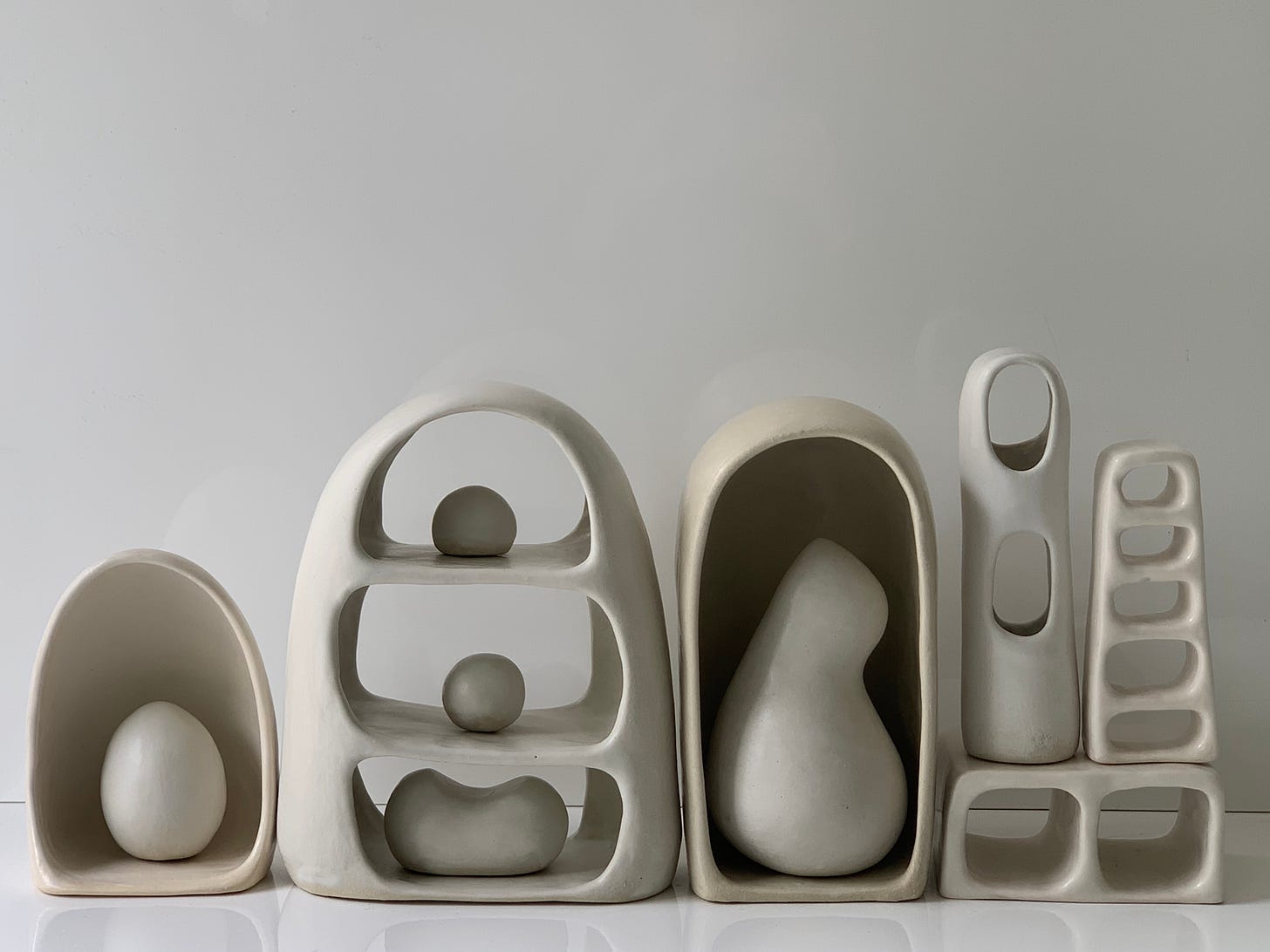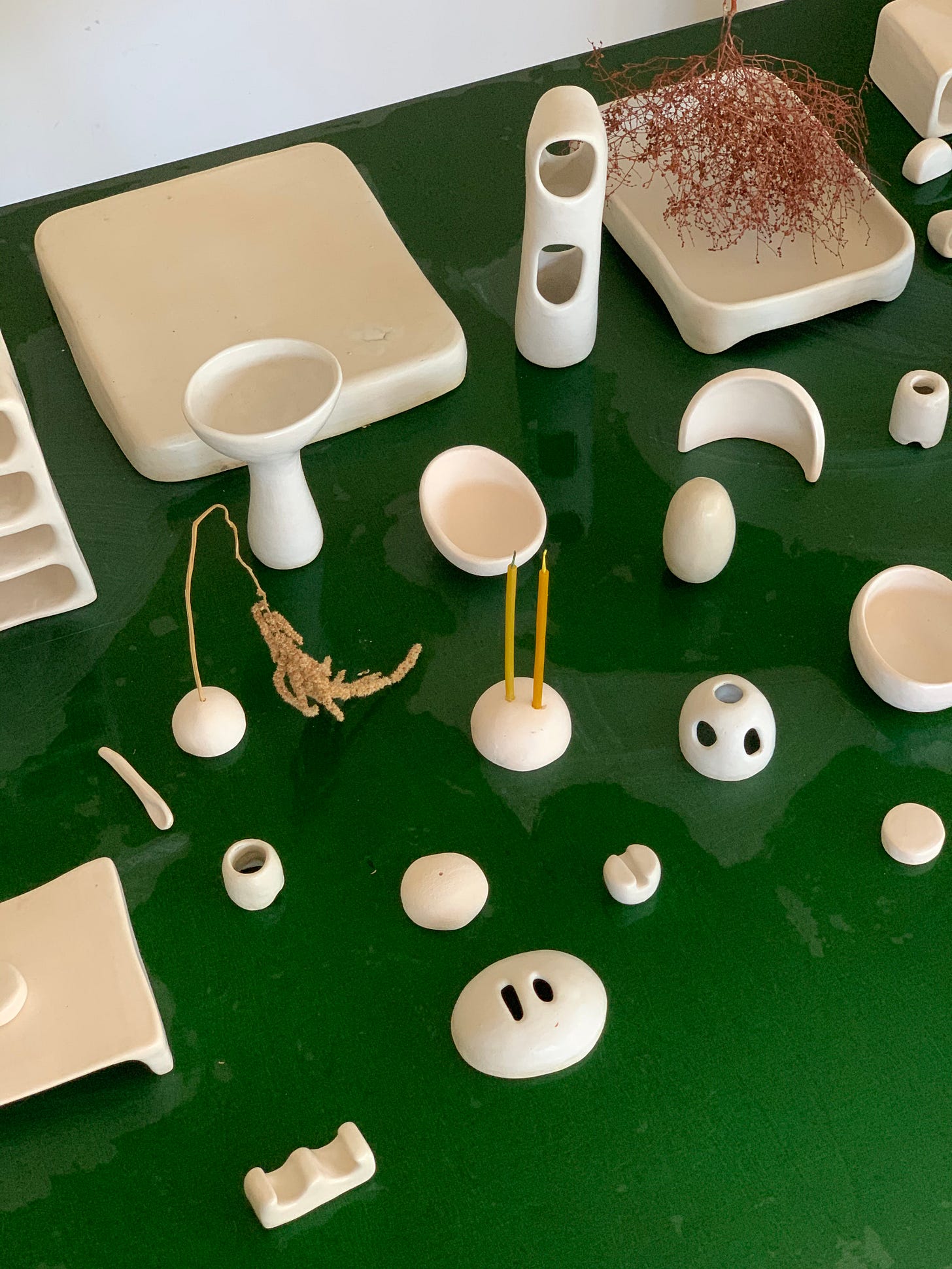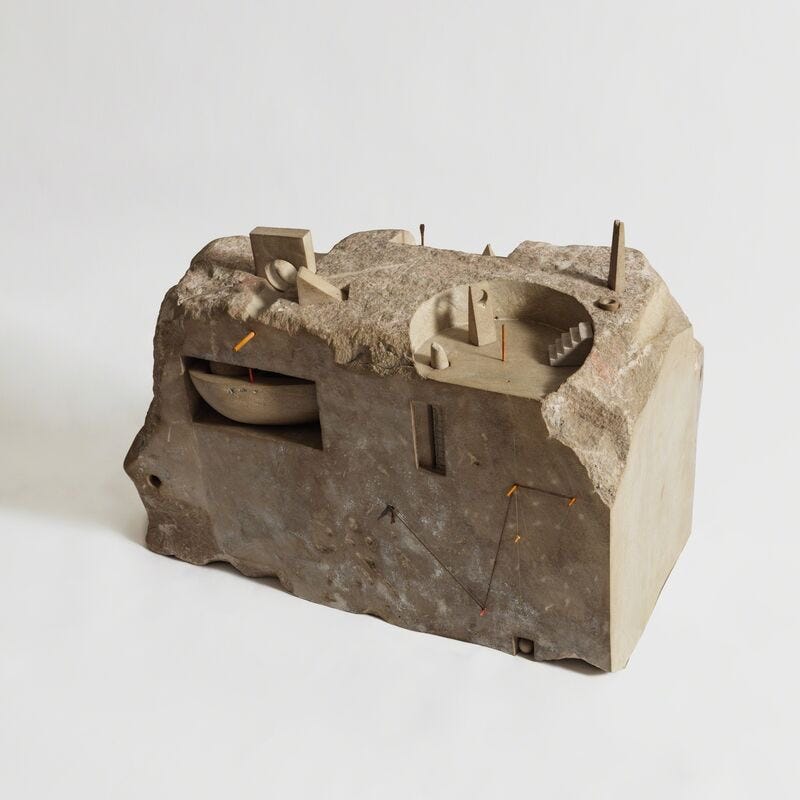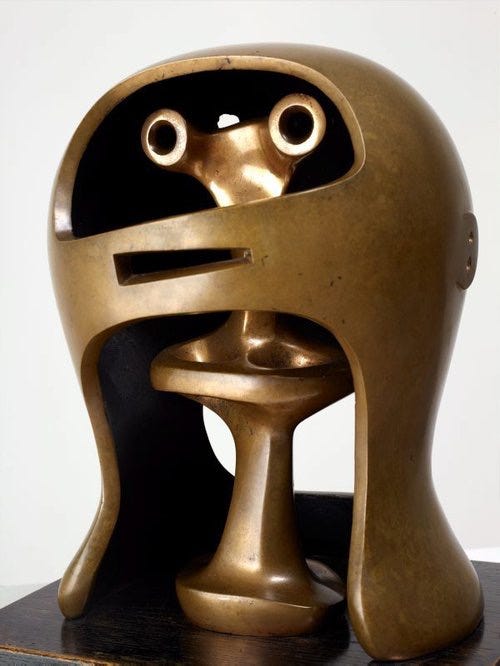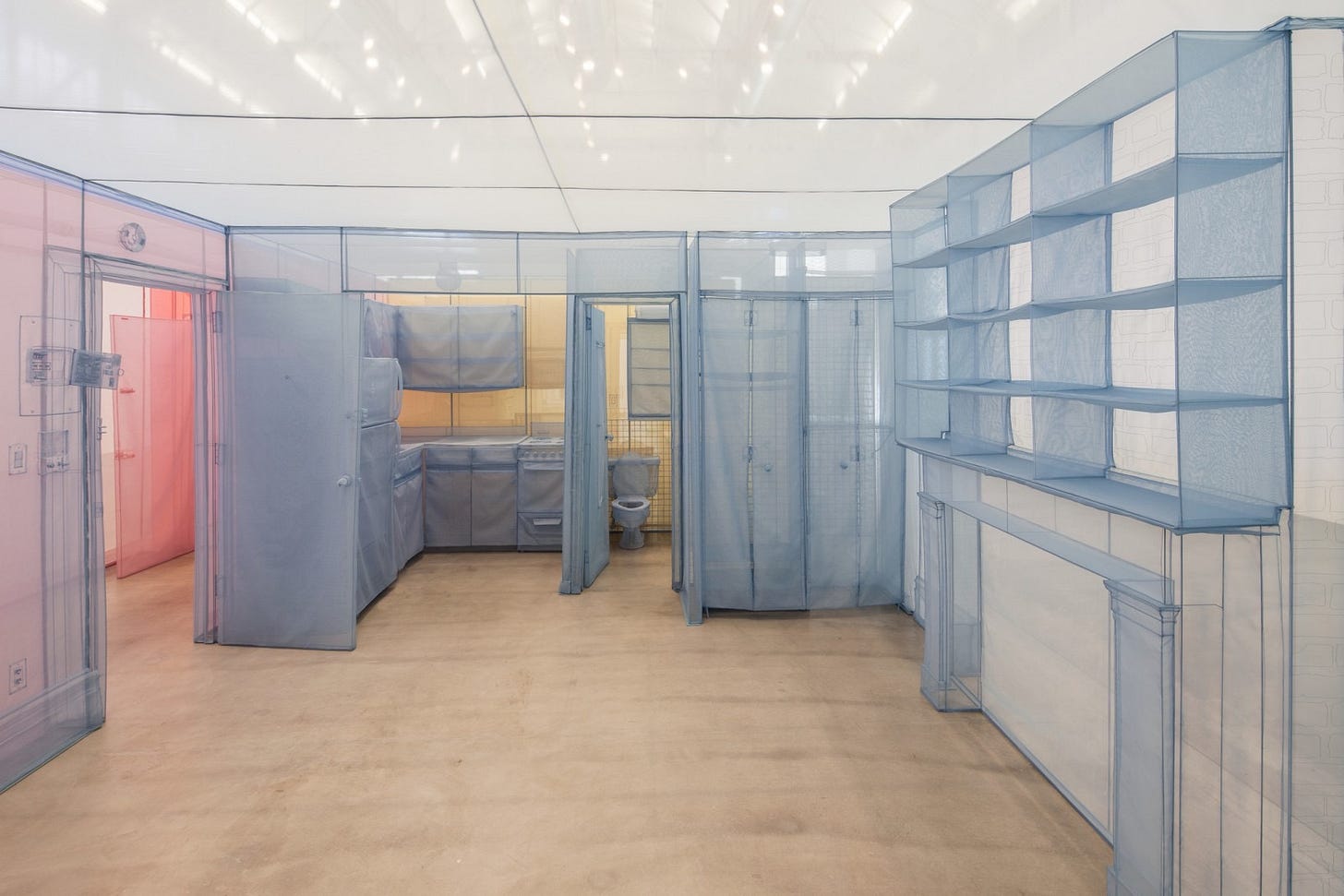Shelters
I once went on a summer trip bicycling in the Loire Valley in France. The initial appeal of the trip was long paved roads and flat rides through wheat fields to visit the famously opulent chateaus. But the most enticing homes we visited weren’t the grand castles, they were the cave homes, the troglodyte caves, built directly into the soft tuffeau stone cliffs. Viewed from the outside, many looked almost identical to the nest holes we watched swallows fly in and out of, just on a human scale. Many of the troglodyte caves are actually mines and quarries that resourceful locals turned into habitations. The stone had been quarried to build those same grand chateaus we visited.
I ate my first panna cotta in a café housed in a cool cave. The dessert and the immediate relief the cave provided (the stone maintains nearly the same temperature year round) from the hot, dusty ride were restorative and I felt as if I had transformed into a troglodyte myself. It was a short lived transformation, but there will never be a panna cotta to match it. We rode in and out of a quarry, and took a steep winding path through a troglodyte village. There was a deep visceral connection - the chalky stone like something out of primordial lake bed and how safe and cool it felt within - mixed with an enchanted, mystical kind of reverence akin to being in a primitive cathedral.
I like to make homes for things I make. They tend to be cavelike, nichelike, ceramic arches with nooks or shelves or varied openings. I think of them as my troglodytes - small creature-like sculptures occupying their own improvised homes.
These little bits of architecture likely reflect a Catholic upbringing. The BVM (Blessed Virgin Mary) could most certainly find refuge in one of the arches. It would be just like those sacred images of saints enshrined to worm their way into my psyche and attempt to invent a kind of sanctity by providing the things I make with a home and a halo.
I also love the idea of creating small scale worlds complete with landscapes and shelters. Gonzalo Fonseca’s secret worlds and totems are mesmerizing. They strike the same mysterious chord that Stonehenge and games of Myst and Riven did for me growing up. His sculpture worlds inspire action (you want to finger walk up the stairs, set the hanging ball in motion, work the pulley) and a desire for exploration and excavation. They are their own kind of pygmy troglodytes - but abandoned ones filled with artifacts and relics to be wondered at. Fonseca actually took pictures of quarries and drew his fantastic visions onto the photos. He modeled his sculptures after those quarry drawings, just as the troglodytes built their homes into abandoned quarries.
Gonzalo Fonseca, Tabatinga, 1984
Henry Moore’s Helmet Heads are a kind of small scale, individual shelter built for one. The architecture is modeled after knight’s helmets, but they often house creatures that appear less aggressor, and more like strange invertebrate vulnerables in womblike caves.
Henry Moore, Helmet Head no.2, 1955
If sculpture, art, the making of anything, is an attempt at externalizing something internal, trying to expose the subterranean, then one might feel the need to build those things a home once they reached the outside. Give them their own worlds, or at least the safety of a cave. And not just protection, but the possibility of maturation. Allow the seed the possibility of sun, but with enough coverage to germinate. Give the caterpillar its cocoon.
It would be a disservice to dissect and separate the interiors of these bits of architecture from the architecture itself. Wouldn't it? I just as often find myself making a home and then repurposing some bit I’ve made to fit inside, or I’ll make something new expressly to turn the cave into a home. That experimentation with objects and their relationship to one another is perhaps the most stimulating work I do. They are separate but of apiece. They are not empty shelters, or solitary sculptures, they belong to one another. As a home belongs to a person, and a person belongs in their home.
But what if the occupant is removed? Or the viewer is transformed into the occupant?
Maira Kalman and her son, Alex Kalman, in their recreation of her late mother and his late grandmother’s closet, did create an empty domestic space in remembrance of its owner. Sara Berman’s Closet is an homage to a woman with singular taste and particular choices. Hers was an exclusively white wardrobe and she appears to have kept it most militantly. Inviting the wide world to view a loved one’s most personal space is a profound memorial to her life and eccentricities. And, really, what is a better expression of adoration than to celebrate a beloved’s specific brand of peculiarity?
Maira Kalman and Alex Kalman, Sara Berman’s Closet, 2015
I had the chance to walk through Do Ho Suh’s 348 West 22nd St, a recreation of the artist’s apartment in New York made nearly entirely in fabric. It is also a memorial of a kind, and has the undeniable specificity of a real home, but devoid of personal effects it only suggests the life lived within. It was an almost eerie, dreamlike experience to walk through its ethereal cloth walls. It is architecturally intimately rendered down to the plumbing and sockets. It gives the effect of walking through someone’s well-worn memory of a home, or walking with someone through their home with their eyes closed. But in this memory, the individual has been excised to leave a ghost of a home. A kind of haunted house.
Do Ho Suh, 348 West 22nd St, 2011-15
Ursula K. Le Guin in her essay The Carrier Bag Theory of Fiction presents the bag as the foremost invention in human evolution, and the potential salvation of storytelling. This idea of a bag rather than a club or implement of violence as the key and primary invention of humanity empowers Le Guin to recognize her place within it -
“If it is a human thing to do to put something you want, because it is useful, edible, or beautiful, into a bag, or a basket, or a bit of rolled bark of leaf, or a net woven of your own hair, or what have you, and then take it home with you, home being another, larger kind of pouch or bag, a container for people, and then later on you take it out and eat it or share it or store it up for winter in a solider container or put it in the medicine bundle or shrine or the museum, the holy place, the area that contains what is sacred, and then next day you probably do much the same again - if to do that is human, if that’s what it takes, then I am a human being after all. Fully, freely gladly, for the first time.”
If putting a thing in a bag is the pinnacle of humanity, then making a sculpture in a home is an expression of that self-same most human impulse. It belongs in that same collection that Le Guin believed was the best, strongest way to neutralize the combative, brutal hero narrative that dominates our society. The death narrative, the “killer story” as she terms it, the story of the club, that was/is so pervasive but so unnatural it made her feel inhuman. In her essay, Le Guin urges action -
“It sometimes seems that that story [the killer story] is approaching its end. Lest there be no more telling of stories at all, some of us out here in the wild oats, amid the alien corn, think we’d better start telling another one, which maybe people can go on with when the old one’s finished. Maybe. The trouble is we’ve all let ourselves become part of the killer story, and so we may get finished along with it. Hence it is with a certain feeling of urgency that I seek the nature, subjects, words of the other story, the untold one, the life story.”
Make a thing. Give it a home. It can be a bag or an arch. It can be made of clay, or of stone, or built directly into the stone itself. A shelter can be made of a helmet. A closet can stand in for a life. Transparent, delicate fabric can ephemerally memorialize and share a home with a stranger.
Make a thing. Give it shelter. Tell the story of a thing cared for enough to give it a home. Tell the story of life.



